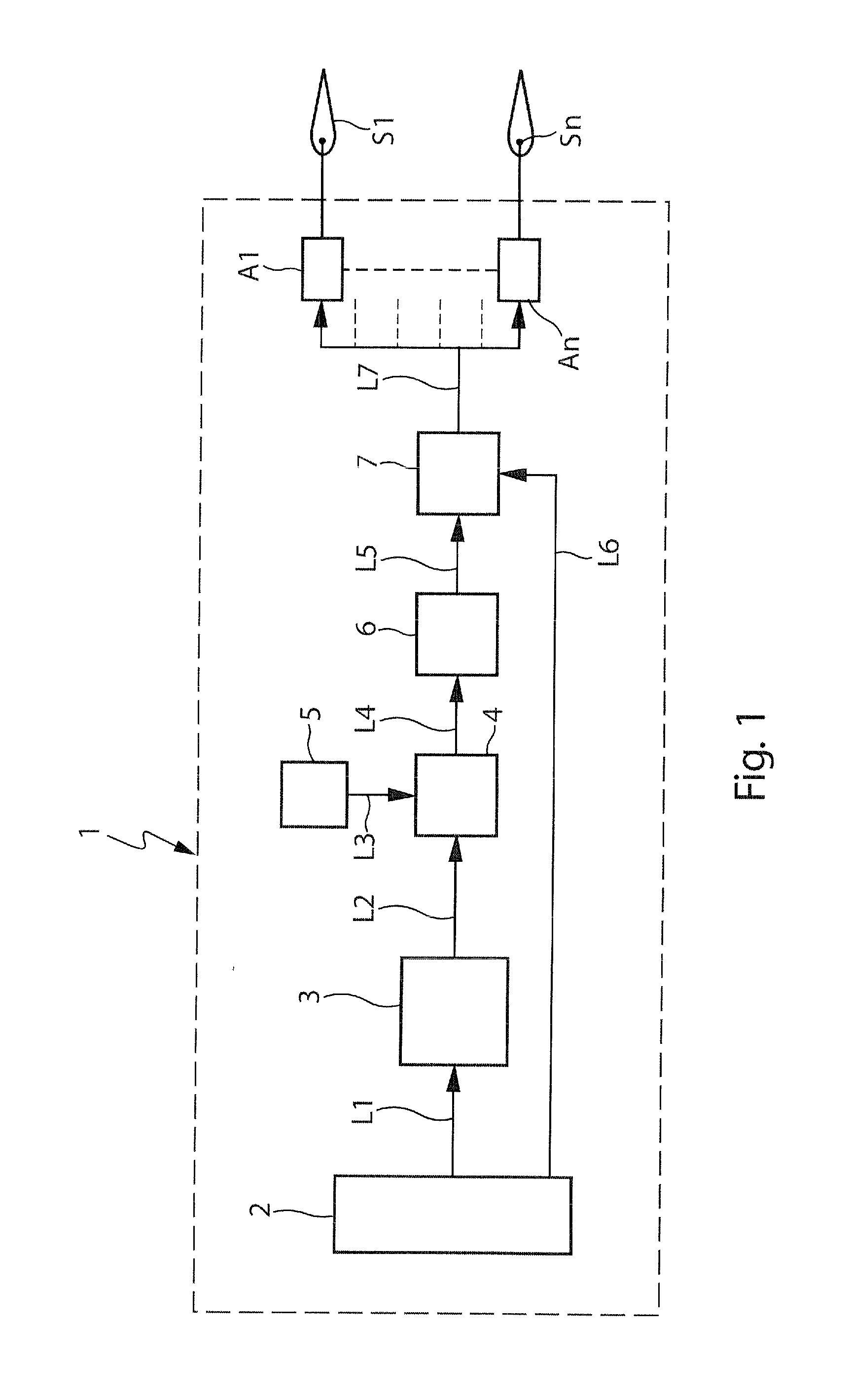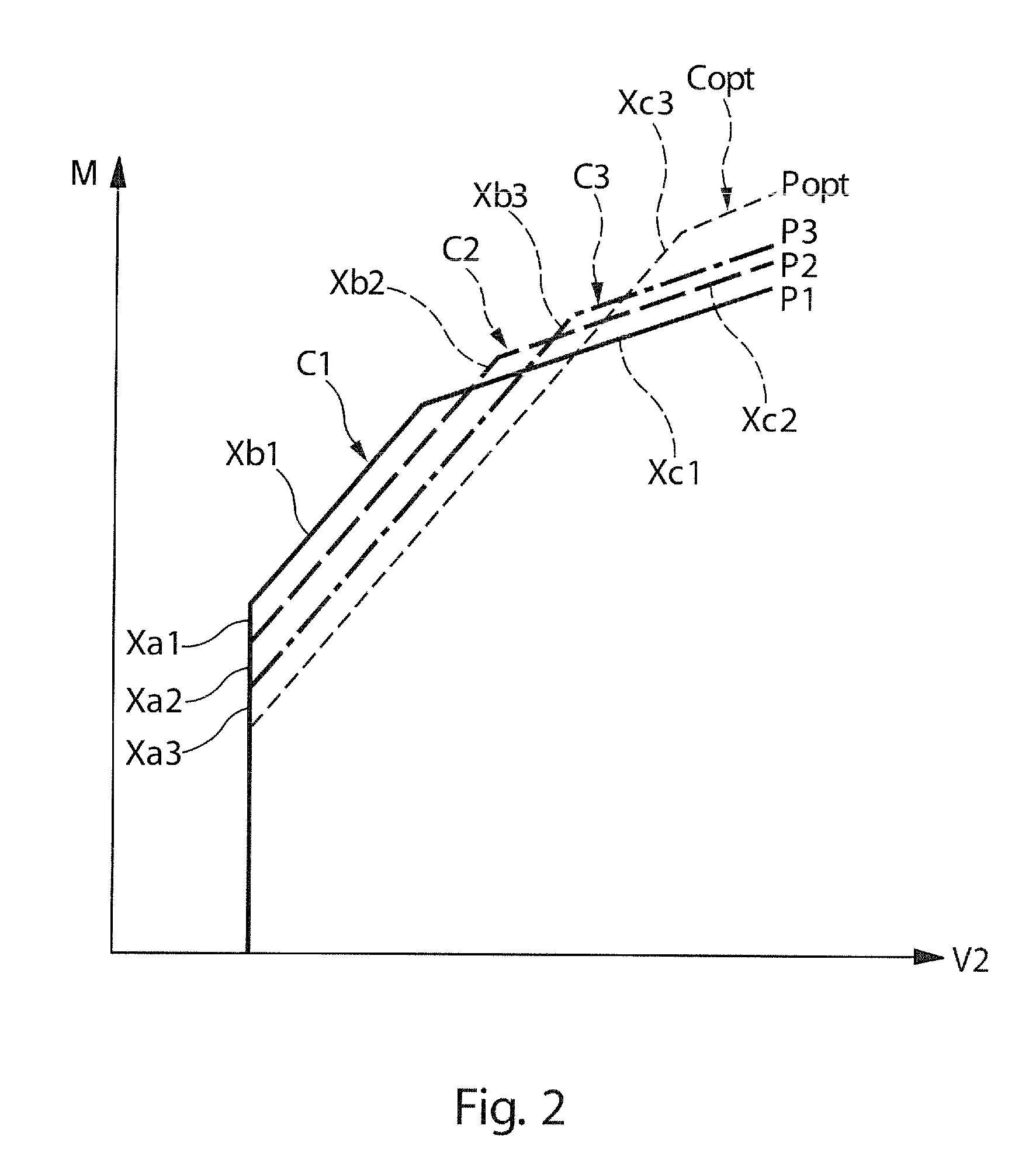Method and system for improving the performance of an aircraft upon take off
a technology of aircraft and takeoff, applied in the direction of process and machine control, instruments, navigation instruments, etc., can solve the problems of increasing the rolling distance down the runway, unfeasible on a short length runway, possible speed extension, etc., to reduce the deviation, reduce the drag of the aircraft, and reduce the deflection of the control surfa
- Summary
- Abstract
- Description
- Claims
- Application Information
AI Technical Summary
Benefits of technology
Problems solved by technology
Method used
Image
Examples
Embodiment Construction
[0076]The system 1, in accordance with the invention and schematically depicted in FIG. 1, is designed for improving the take-off performance of an aircraft, in particularly a civil or military transport airplane, which comprises aerodynamic control surfaces S1-Sn (n being an integer). These control surfaces S1-Sn are, for example, in the form of leading edge slats and trailing edge flaps arranged on the wings of the airplane.
[0077]Usually, the control surfaces S1-Sn are able to have, upon take-off, a determinist high-lift take-off position which is selected automatically, before take-off, from, for example, three separate take-off positions P1, P2 and P3. Each take-off position P1, P2, P3 corresponds to predefined deflections of the control surfaces S1-Sn at predetermined deflection angles. As an illustrative example, take-off position P1 is the one which generates the highest lift among the three take-off positions P1 to P3. On the contrary, position P3 is the one which generates ...
PUM
 Login to View More
Login to View More Abstract
Description
Claims
Application Information
 Login to View More
Login to View More - R&D
- Intellectual Property
- Life Sciences
- Materials
- Tech Scout
- Unparalleled Data Quality
- Higher Quality Content
- 60% Fewer Hallucinations
Browse by: Latest US Patents, China's latest patents, Technical Efficacy Thesaurus, Application Domain, Technology Topic, Popular Technical Reports.
© 2025 PatSnap. All rights reserved.Legal|Privacy policy|Modern Slavery Act Transparency Statement|Sitemap|About US| Contact US: help@patsnap.com



